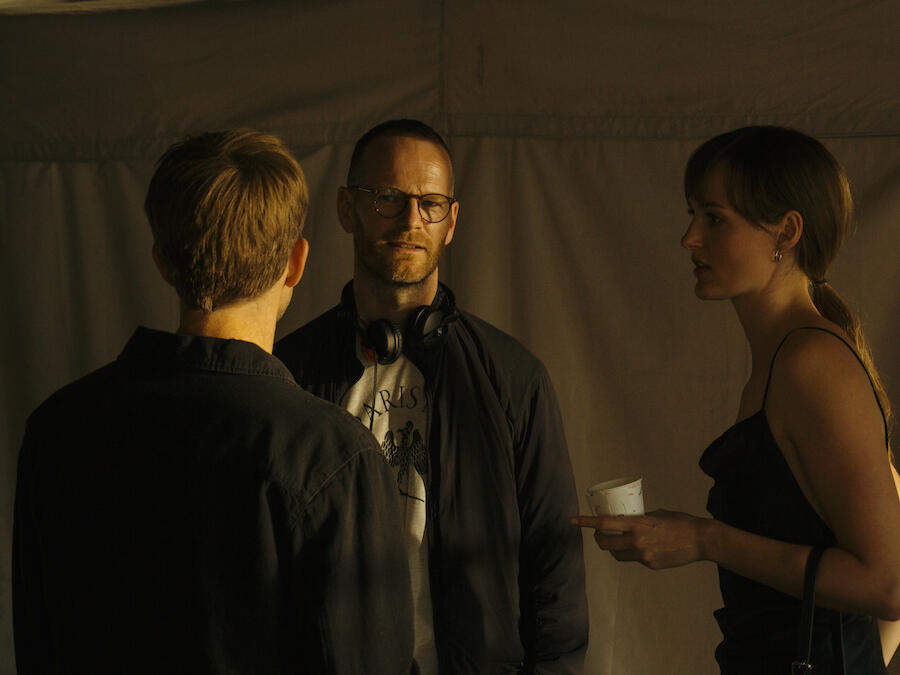'The Worst Person in the World' Reveals Oslo in Intimate Detail
Caitlin Quinlan speaks to director Joachim Trier about coming of age and how to capture the spirit of a city
Caitlin Quinlan speaks to director Joachim Trier about coming of age and how to capture the spirit of a city

Caitlin Quinlan: You wrote the character of Julie, the protagonist of your latest film, The Worst Person in the World [2021], with the actress Renate Reinsve in mind.
Joachim Trier: Yes, Renate has always been easy to talk to about experiences of love and existence – we often end up in the corner at parties having deep discussions about existential choices or negotiating intimacy – so I knew she was curious about the subject matter, and I felt confident I could explain it to her before it was written. I talked about Julie as a character with great dreams and expectations of life. Above all, I asked Renate to trust that I knew what I was doing – and, fortunately, she did. Showing her the script was a tense moment for both of us, but she really enjoyed reading it and felt that it was very accurate.

CQ: Was there anything she did in terms of making the character her own that surprised you?
JT: Some actors get worried when a character lacks definition or nuance, but Renate embraced it. It became a quality of the story we’re telling. I was challenging her to just be Julie and trust that it would work.
CQ: Within the context of your ‘Oslo Trilogy’, how do you see this film compared to Reprise [2006] and Oslo, August 31st [2011]? It seems to me that The Worst Person in the World is an uplifting addition and marks a coming of age for the trilogy.
JT: It has been more than 15 years since I made Reprise, the first work in the trilogy, so I have obviously developed as a filmmaker in that time. And Oslo has changed as a city, too. Oslo, August 31st is a devastatingly sad film in many ways. I grew up in the 1990s as part of the skateboard scene, being a Norwegian skateboarding champion, making skate videos and hanging out with a group of very cool people, living on the margins of what would be considered a normal existence. I enjoyed those years a lot, but then I moved on: I went to film school while many of my friends became writers or got regular jobs. Others didn’t have such a good time; I lost a lot of friends to drugs. But, through my late 30s into my 40s, I came to realize that there is a lot of hope in life, and that’s how The Worst Person in the World took shape.

CQ: As someone interested in psychogeography – city spaces and how people and characters exist within them – I find the ‘Oslo Trilogy’ a fascinating time capsule. Have you come to understand the city differently over the course of making these films?
JT: As a filmmaker, I have created a subjective Oslo – one that will never exist outside of these films and my perspective. It’s interesting in terms of capturing the spirit of a place: how to shoot a space you love? That is the essence of making cinema. It sounds abstract, but it’s actually very specific: capturing the emotion of a street corner, for instance, and realizing how mood speaks through space. It’s often unspoken, but you feel it. That’s what’s exciting about film. The ‘Oslo Trilogy’ has changed my relationship to the city and made it even more of a home to me because I have spent so much time in those spaces – hanging out with the crew on regular street corners, eating lunch, watching the people going by. I now know Oslo in intimate detail.

CQ: The Worst Person in the World resonates particularly with audiences in their 30s, who are trying to navigate the same kind of relationships, career choices and moments of uncertainty as Julie. Do you detach from the film once you’ve given it to an audience?
JT: There is no need to cling onto a film – I want it to take on a life of its own. I don’t rewatch my films; I let go purposefully to move on and make a new one. Of course, I’m very grateful for the attention my work receives and the great pieces written about it. Both Paul Thomas Anderson and Barack Obama listed The Worst Person in the World among their favourite films of 2021, which I would never have expected but makes me incredibly happy.
CQ: One might compare Julie to the protagonist of Paul Thomas Anderson’s Licorice Pizza [2021] and to the main character, also named Julie, in Joanna Hogg’s The Souvenir: Part II [2021]. All three female leads are going through something of a midlife crisis.
JT: I love both The Souvenir and Licorice Pizza. The subtlety and tenderness of those worlds and those characters is precisely what fascinates me about film. That, to me, is cinema – trying to capture the subjectivity of memory and experience. That’s all that I care about.
Joachim Trier's The Worst Person in the World is available to watch in UK cinemas from 25th March 2022
Main image: Joachim Trier, The Worst Person in the World, 2021, film still. Courtesy: Mubi UK























